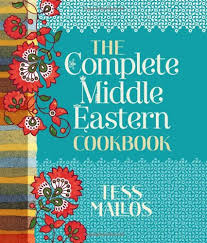
This book was sent to me by the publisher at no cost.
In the last post I discussed the appearance of the book (overall, very easy to use). This post is about the food. I’ve only cooked a few dishes so far, but each one has worked as advertised. The short version is that everything has had an interesting balance of flavours, and most of them I would happily cook again.
Sesame chicken salad: blanched celery, poached chicken, a dressing of chilli and garlic and ginger and spring onion and fish sauce and vinegar. So easy, so fresh, so lovely.
Pork and pickled cucumber salad: well, the cucumber doesn’t pickle that much, but look: I’m trying pork! This was delicious, with peanuts and coriander and mint and chilli and lime.
Prawn noodle salad (it hasn’t even been that warm here but I’m on salads anyway): more ginger! and coriander and peanuts. Again, so tasty. Would make a good starter at a fancy-pants dinner party.
Barbecued pork and herb salad: more pork! This marinade was ace: coriander seed, fennel seed, garlic, ginger, turmeric, five-spice, chilli, pepper… nom.
Massaman curry: look, I cheated and bought massaman paste. Whatever. This was fantastic. Slow cook the beef and THEN turn it into a curry with coconut cream and potato… definitely making this again.
Braised chicken with rice, turmeric and spices: like the label says. Easy and tasty.
… these are just a small example of what the book has to offer. I am dead keen to try the variation of chicken satay with lemongrass, turmeric and ginger, and the Thai fish cakes; pork belly may be in my future, and I may yet make a curry paste from scratch (again, I did do it a million years ago).
The one sad thing is that, as with Indian Made Easy, there have been a couple of instances where instructions did not entirely make sense: not making it clear how long to cook something (fortunately, that was common sense) or instructions to add a dressing at step 3… and then again at step 6. None of these are make or break, but they do surprise me in a book that should be more closely edited.

 The book itself
The book itself I’d been wanting this book for quite a long time when I finally saw it on sale and cracked. I like that it doesn’t just have the standard ‘Middle Eastern’ countries that I think Anglo-Australians think of when they think of food; it’s got Armenia, The Gulf States, Yemen…. So my thought was to try and do a week or two of mostly cooking from on country. Obviously that’s going to be harder or easier depending on season, as to what we feel like; and some ingredient will make things hard. But I figure it’s a good way to try new things and make my way through bits of the book.
I’d been wanting this book for quite a long time when I finally saw it on sale and cracked. I like that it doesn’t just have the standard ‘Middle Eastern’ countries that I think Anglo-Australians think of when they think of food; it’s got Armenia, The Gulf States, Yemen…. So my thought was to try and do a week or two of mostly cooking from on country. Obviously that’s going to be harder or easier depending on season, as to what we feel like; and some ingredient will make things hard. But I figure it’s a good way to try new things and make my way through bits of the book. pies; they were quite tasty. However the pastry has made me leary of trying them again.
pies; they were quite tasty. However the pastry has made me leary of trying them again.